forum
library
tutorial
contact

Warm Water Hitting
Returning Sockeye Hard
by Staff
Columbia Basin Bulletin, July 31, 2015
|
the film forum library tutorial contact |

|
Warm Water Hitting
by Staff
|
NOAA Says Maybe 80 Percent Mortality for Upper Columbia
 The latest estimate of sockeye salmon mortality in the upper Columbia River Basin, mostly due to high water temperatures, is 80 to 90 percent of a summer return run of nearly a half million fish, according to NOAA Fisheries.
The latest estimate of sockeye salmon mortality in the upper Columbia River Basin, mostly due to high water temperatures, is 80 to 90 percent of a summer return run of nearly a half million fish, according to NOAA Fisheries.
"80 percent is the best for the upper Columbia River," said NOAA public affairs officer Michael Milstein. Most sockeye migrate into the upper Columbia and a much smaller proportion move into the Snake River Basin.
Either way, Milstein said, the proportion of mortality appears to be the same for sockeye salmon that have been trying to migrate throughout the greater Columbia River Basin.
"They are either parked in the river waiting for better conditions, or they are dead and dying," Milstein said on Thursday.
"We know that a half million sockeye are in the river, because a half million of them passed through Bonneville (Dam), and we know that only a small portion of them were destined for the Snake River," he said, adding that only 10 percent have passed through Lower Granite Dam, just shy of the Idaho border.
A variety of news reports from earlier this week discussed mortality rates for sockeye salmon to be roughly half of the summer return run, but those estimates have been increased, said Milstein, who emphasized that mortalities are difficult to estimate.
But estimates aside, Milstein said 2015 has been a remarkable year for dry, hot, early runoff conditions in the Pacific Northwest.
"From everything that I am aware of and can compare . . . there hasn't been a year like this year before. We are seeing August (streamflow) temperatures in June," he said.
Milstein noted that there were drought conditions for the Columbia Basin in 2001 that adversely impacted streamflow volumes, "but we didn't have the same temperature problems in the water that we see this year."
The extreme nature of the situation has prompted fishing regulation changes from the Washington Department of Fish and Wildlife that took effect after sunset on July 26. All sockeye harvest was banned from Rocky Reach Dam to Chief Joseph Dam.
"Elevated water temperature in the Columbia River resulted in higher than expected mortalities of sockeye salmon returning to the Okanagan River," a press release from the department states. "Fish destined to return to the Okanagan River are staging in the Columbia River above the Rocky Reach Dam. This fishing closure for sockeye salmon is needed to protect these fish from harvest and allow them to migrate to their spawning grounds when water temperatures improve."
As of Thursday (July 30) 508,734 sockeye had been counted passing over Bonneville Dam; 426,630 at The Dalles Dam; 361,342 at John Day Dam; and 274,731 at McNary Dam.
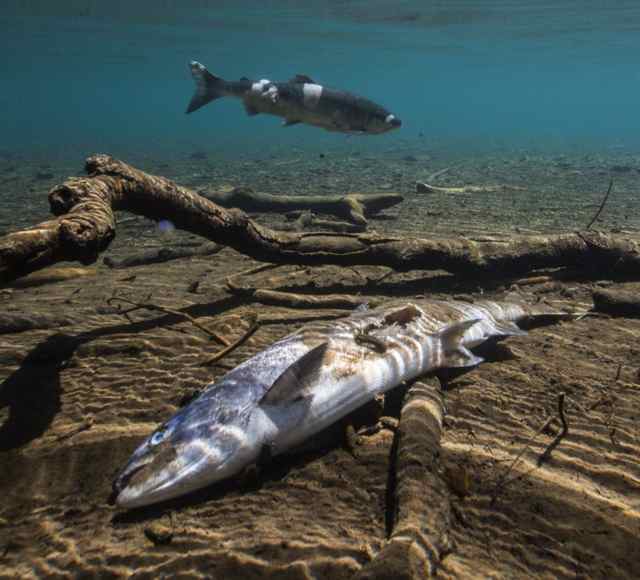 WDFW did open Lake Wenatchee for sockeye fishing beginning Thursday, July 30.
WDFW did open Lake Wenatchee for sockeye fishing beginning Thursday, July 30.
"Based on current passage over Tumwater Dam, at least 30,000 sockeye are projected to enter into Lake Wenatchee. This provides at least 7,000 sockeye for harvest above the natural spawning escapement goal of 23,000 fish," said WDFW.
Meanwhile, another 1.8 million salmon and steelhead are now returning to the Columbia River, with the majority headed for the Basin's (at least for now) low, warm flows above Bonneville Dam.
Columbia River fisheries managers are expecting a 2015 fall chinook return of 925,300 fish, which would be 80 percent of the 2014 actual return (1,159,100) and 147 percent of the 2005-2014 average return (631,200).
Fall chinook generally enter the Columbia River from late July through October with abundance peaking in the lower river from mid-August to mid-September and passage at Bonneville Dam peaking in early to mid-September.
The 2015 forecast for the summer steelhead return to Bonneville Dam is 312,200 upriver fish, including 13,400 Skamania stock (4,100 wild), 257,700 Group A stock (95,400 wild), and 41,000 Group B stock (11,700 wild). Overall, the forecast is 90 percent of the 2005-2014 average of 347,500 fish. The Skamania and Group A forecasts are 103 percent and 105 percent the 2005-2014 respective average returns. The Group B forecast is 80 percent the 2005-2014 average return.
The majority of steelhead passage at Bonneville Dam occurs during July through October.
The 2015 forecast for the Columbia River coho return is for a strong return of 539,600 adults, which includes 377,300 early stock and 162,300 late stock. The forecast is 117 percent of the 2005-2014 average of 459,800 fish. The individual forecasts for early and late stock coho are 131 percent and 95 percent of the 2004-2013 averages, respectively. Bonneville Dam passage is expected to be 190,500 adult coho, which represents 65 percent of the forecasted total ocean abundance of Columbia River coho destined for areas upstream of Bonneville Dam.
Early stock coho enter the Columbia River from mid-August to early October with peak entry occurring in early September. In the ocean, early stock coho tend to remain near the Oregon and southern Washington coasts and primarily migrate southward from the Columbia River, and are therefore referred to as Type S. Late stock coho enter the Columbia River from mid-September through December with peak entry occurring in mid-October.
For more see the July 14, 2015 Joint Staff Report: Stock Status and Fisheries For Fall Chinook Salmon, Coho Salmon, Chum Salmon, Summer Steelhead, and White Sturgeon by Joint Columbia River Management Staff, Washington Department of Fish and Wildlife, Oregon Department of Fish and Wildlife.
Related Pages:
Why Are Thousands of Migratory Salmon Dying Before They Can Spawn? by Courtney Sherwood, Christian Science Monitor, 7/27/15
Biologists Bring Sockeye into ' on Trucks to Get Them Out of Hot Water by Rocky Barker, ' Statesman, 7/17/15
Sockeye Salmon Suffer Infections in Warm Columbia River System by Rich Landers, Spokesman-Review, 7/17/15
Half of Columbia River Sockeye Salmon Dying Due to Hot Water by Associated Press, The Oregonian, 7/18/15
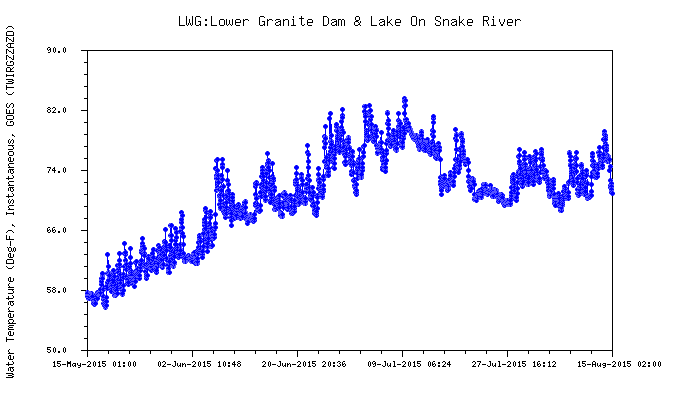
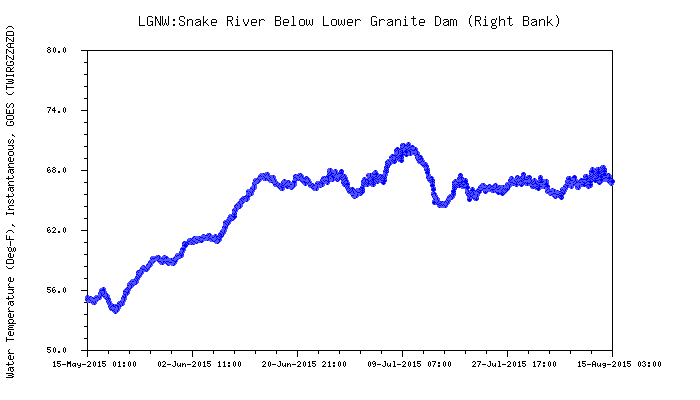
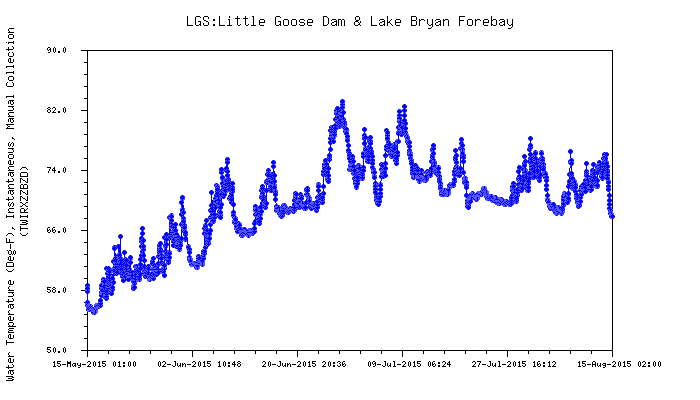
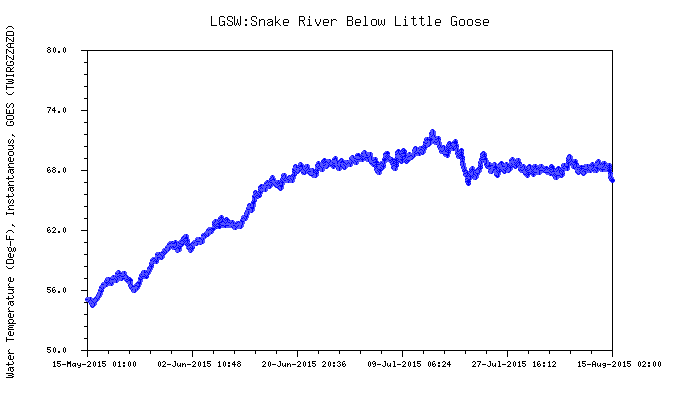
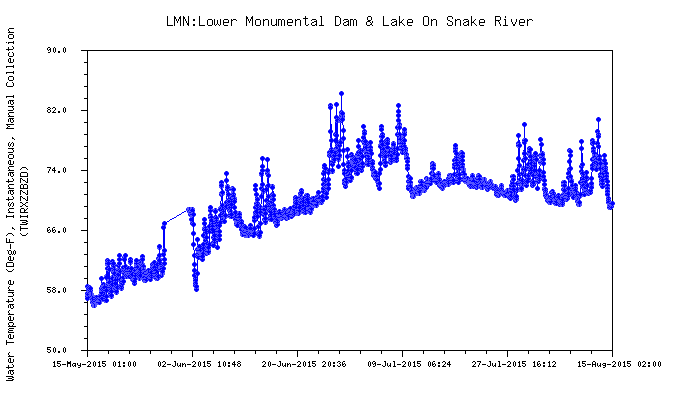
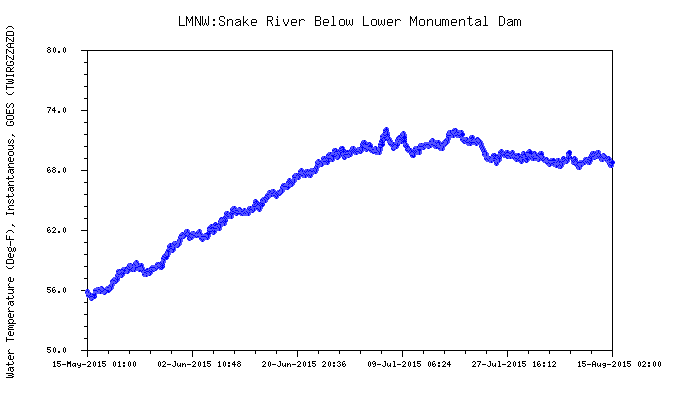






learn more on topics covered in the film
see the video
read the script
learn the songs
discussion forum
